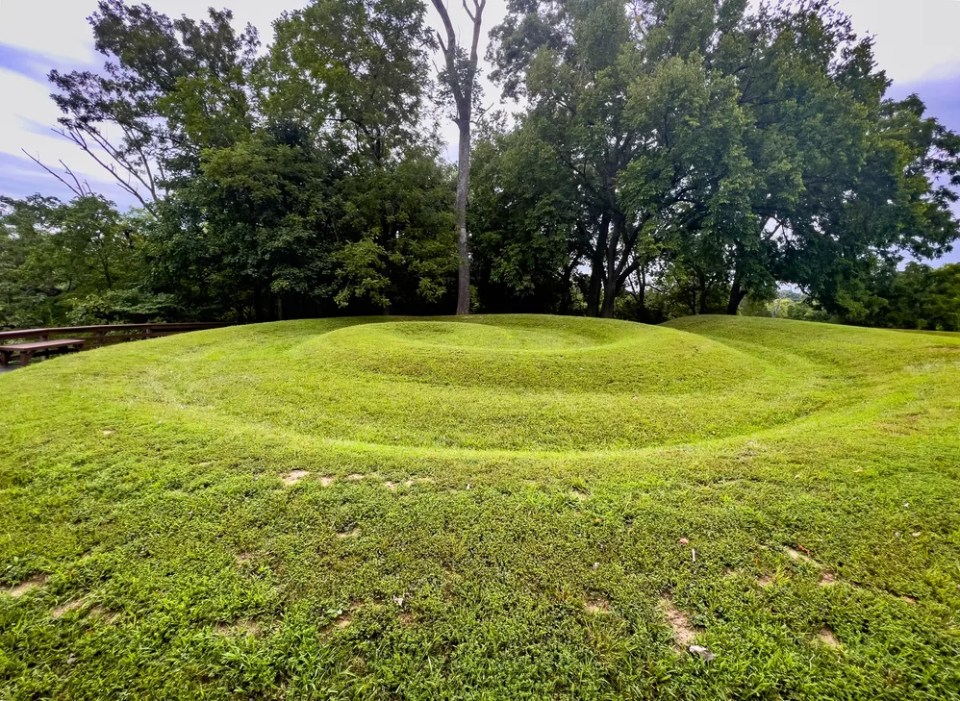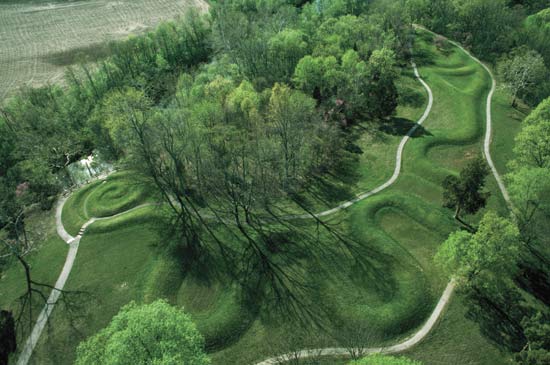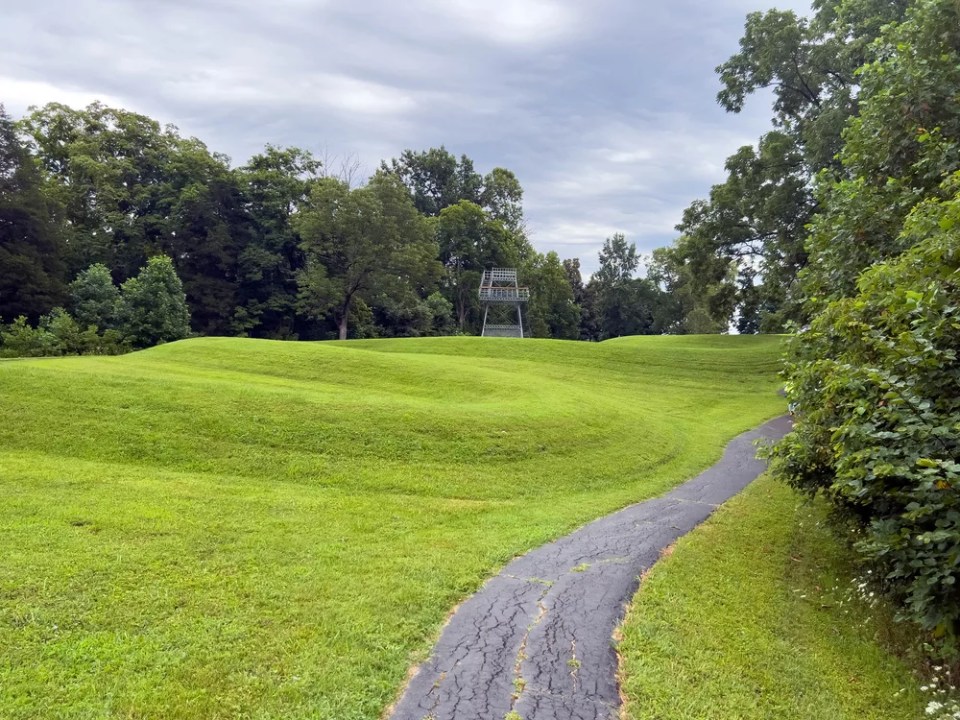The early North American “Mound Builders” resided predominantly in the current Ohio Valley and Mississippi regions. The Adena people, the most ancient among them, thrived from 1000 BCE to 200 BCE, leaving behind numerous mounds stretching across North America, from Wisconsin to Mississippi.
Photo by Flickr
One of the rare surviving relics from these mound builders is the Great Serpent Mound – a prehistoric effigy mound in southern Ohio, extending 1,330 feet long and rising three feet high. The earliest interpretations suggest that it portrays a serpent devouring an egg, though an intriguing alternative theory proposes the serpent is swallowing the moon.

Side view closeup of the coiled tail of the snake at Serpent Mound in Ohio, the largest effigy mound in the world. Ridges of the prehistoric Native American engineering earthwork art are clearly visible covered in green grass.
Photo by depositphotos.com
The colossal geoglyph encapsulates the fundamental cosmological concepts of an indigenous ancient American Indian culture. The Serpent Mound is an epitome of prehistoric effigy mound-building globally and stands as a tradition among some current American Indian cultures in the Eastern United States. The exceptionally realistic quality makes it immediately identifiable as a serpent, and its shape also astronomically indicates the change of seasons. Elements of the serpent mound and its positioning imply potential connections with astronomy. The head of the serpent aligns with the sunset on the summer solstice, while its tail aligns with the sunrise during the winter solstice. It’s plausible that the mound functioned as a form of calendar, signaling appropriate times for planting or harvesting. Maybe, the Great Serpent held immense spiritual power, enabling the widespread pre-Columbian culture to draw upon it for hunting assistance and illness remedies.
The builders of the Great Serpent Mound remain uncertain. While similar structures and nearby burial grounds were constructed by the Adena people, charcoal sourced from the mound is dated later in history, around 1000 CE, implying that the Fort Ancient peoples might have constructed the mound. They inhabited the Ohio Valley from 1000 CE to 1550 CE.
Located within the Serpent Mound State Memorial, this effigy has achieved National Historic Landmark status. A nonprofit organization, Arc of Appalachia, operates a museum in the mound’s vicinity.
Click Here to Read the Full Original Article at Unusual Places…

